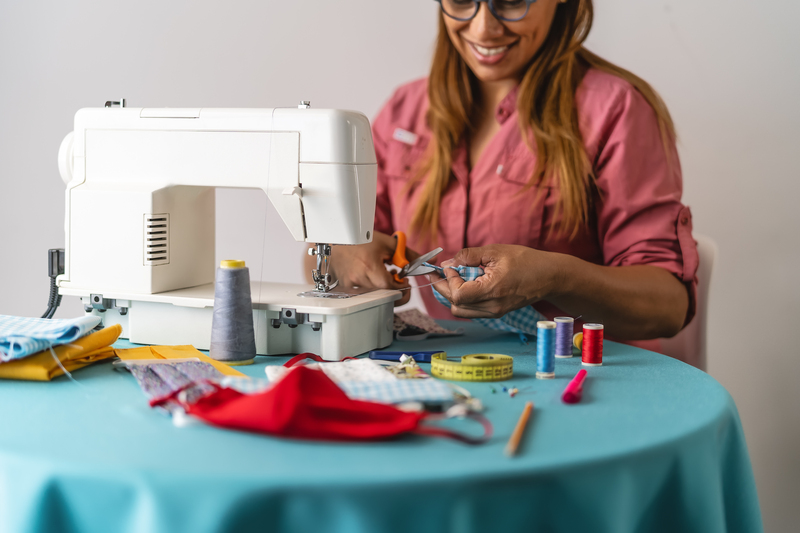Beginner's Guide to Sewing: Getting Started with Your First Project
If you're new to the world of sewing, you're in the right place. Whether you're eager to create your own clothing, accessories, or home decor items, sewing is a rewarding and creative hobby that anyone can enjoy. In this guide, we'll walk you through the basics of sewing and provide tips and tricks to help you get started on your first project.
1. Choosing Your Supplies
Before you dive into your first sewing project, you'll need to gather some basic supplies. Here's some items you'll need to get started:
Sewing Machine: While hand-sewing is an option, investing in a sewing machine will make your sewing journey much easier and more efficient. Look for a beginner-friendly machine with basic features to start.
Fabric: Choose a fabric that's appropriate for your project. For beginners, cotton fabric is a great option as it's easy to work with and comes in a wide variety of colors and prints.
Thread: Select thread that matches your fabric in both color and weight. Polyester or cotton thread are good choices for most sewing projects.
Scissors: Invest in a pair of sharp fabric scissors for cutting your fabric. It's important to keep these scissors dedicated solely to fabric to prevent them from dulling.
Pins and Needles: You'll need pins to hold your fabric pieces together before sewing, as well as hand-sewing needles for finishing touches.
Measuring Tools: A measuring tape and ruler will come in handy for taking measurements and marking fabric.
2. Choosing Your First Project
Now that you have your supplies, it's time to choose your first sewing project. As a beginner, start with something simple and achievable. Here are a few beginner-friendly project ideas to consider:
Simple Pillowcase: Sewing a basic pillowcase is a great way to practice straight seams and hemming.
Tote Bag: A tote bag is another beginner-friendly project that's both practical and fun to make.
Sewing Pouch: Sewing a small pouch or bag is a great way to practice sewing seams and adding closures like zippers or buttons.
3. Getting Started
Once you've chosen your project, it's time to get started! Here are some basic steps to follow:
Prepare Your Fabric: Wash and press your fabric before cutting to prevent shrinkage and ensure accurate measurements. Note that a good iron and ironing board are great to have in your sewing room/area.
Cut Your Fabric: Use your fabric scissors to cut your fabric according to the measurements provided in your pattern or project instructions.
Follow the Instructions: Take your time to read through the instructions carefully before starting to sew. Pay attention to seam allowances and any special techniques required.
Practice Sewing: Before sewing your project pieces together, practice stitching on a scrap piece of fabric to get a feel for your machine and the stitches.
Take Your Time: Sewing is a skill that takes time to master, so don't get discouraged if your first project isn't perfect. Take your time and enjoy the process!
4. Finishing Touches:
Once you've completed sewing your project pieces together, it's time for the finishing touches. Trim any loose threads, press your seams and admire your handiwork!
Congratulations, you've completed your first sewing project! Marshall Dry Goods hopes this beginner's guide has inspired you to dive into the wonderful world of sewing. We have all of the fabric and sewing supplies you would ever need! Stop by or visit our online store today!
Remember, practice makes perfect, so don't be afraid to experiment and try new techniques. Happy sewing!

